Arab League
|
جامعة الدول العربية
Jāmiʻat ad-Duwal al-ʻArabiyya League of Arab States |
||||||
|---|---|---|---|---|---|---|
|
||||||
 |
||||||
| Headquarters | Cairo, Egypt1 | |||||
| Official languages | Arabic | |||||
| Membership |
22 Arab states
|
|||||
| Leaders | ||||||
| - | Secretary General | Amr Moussa (since 2001) | ||||
| - | Council of the Arab League |
Syria |
||||
| - | Speaker of the Arab Parliament |
Nabih Berri |
||||
| Establishment | ||||||
| - | Alexandria Protocol | March 22, 1945 | ||||
| Area | ||||||
| - | Total area with Western Sahara | 13,953,041 km2 (2nd2) 5,382,910 sq mi |
||||
| - | Area excluding Western Sahara | 13,687,041 km2 ( 5,280,291 sq mi) | ||||
| Population | ||||||
| - | 2007 estimate | 339,510,535 (3rd2) | ||||
| - | Density | 24.33/km2 63/sq mi |
||||
| GDP (PPP) | 2007 estimate | |||||
| - | Total | $2,364,871 million (6th2) | ||||
| - | Per capita | $11,013 (70th) | ||||
| Currency |
21 currencies
|
|||||
| Time zone | (UTC+0 to +4) | |||||
| Website (Arabic) http://arableagueonline.org/ |
||||||
| 1 | From 1979 to 1989: Tunis, Tunisia. | |||||
| 2 | If ranked among nation states. | |||||
|
Life in the Arab League |
|
|---|---|
|
|
The Arab League (Arabic: الجامعة العربية Jāmiʻa al-ʻArabiyya), officially called the League of Arab States (Arabic: جامعة الدول العربية Jāmiʻat ad-Duwal al-ʻArabiyya), is a regional organization of Arab states in Southwest Asia, and North and Northeast Africa. It was formed in Cairo on March 22, 1945 with six members: Egypt, Iraq, Transjordan (renamed Jordan after 1946), Lebanon, Saudi Arabia, and Syria. Yemen joined as a member on May 5, 1945. The Arab League currently has 22 members.
The main goal of the league is to:[1]
| “ | draw closer the relations between member States and co-ordinate collaboration between them, to safeguard their independence and sovereignty, and to consider in a general way the affairs and interests of the Arab countries. | ” |
The Arab League is involved in political, economic, cultural, and social programs designed to promote the interests of its member states. It has served as a forum for the member states to coordinate their policy positions, to deliberate on matters of common concern, to settle some Arab disputes, and to limit conflicts such as the 1958 Lebanon crisis. The league has served as a platform for the drafting and conclusion of many landmark documents promoting economic integration. One example is the Joint Arab Economic Action Charter which sets out the principles for economic activities in the region.
Each member state has one vote in the League Council, while decisions are binding only for those states that have voted for them. The aims of the league in 1945 were to strengthen and coordinate the political, cultural, economic, and social programs of its members, and to mediate disputes among them or between them and third parties. Furthermore, the signing of an agreement on Joint Defense and Economic Cooperation on April 13, 1950 committed the signatories to coordination of military defense measures.
The Arab league has played an important role in shaping school curricula; advancing the role of women in the Arab societies; promoting child welfare; encouraging youth and sports programs; preserving Arab cultural heritage and fostering cultural exchanges between the member states. Literacy campaigns have been launched, intellectual works reproduced, and modern technical terminology is translated for the use within member states. The league encourages measures against crime and drug abuse, and deals with labor issues—particularly among the emigrant Arab workforce.
Contents |
Members and dates
The Arab League was founded in Cairo in 1945 by Egypt, Iraq, Lebanon, Saudi Arabia, Syria, Transjordan (Jordan from 1946), and Yemen. There was a continual increase in membership during the second half of the 20th century, with additional 15 Arab states and 3 observers being admitted.
Egypt's membership was suspended in 1979 after it signed the Egyptian–Israeli Peace Treaty, and the League's headquarters were moved from Cairo to Tunis. In 1987, Arab countries restored diplomatic relations with Egypt and the country was readmitted to the league in 1989 while the league's headquarters moved back to Cairo. In September 2006, Venezuela was accepted as an observer, and India in 2007.
Israel is not a member despite 20% of its population being of Arab origin and Arabic being an official language. Neither is Chad a member, although Arabic is in both official and vernacular use there.
The current members and observers of the Arab League are listed below along with their admission dates.

40's 50's 60's 70's
|
|
||||||||||||||||||||||||||||||||||||
|
Notes:
|
|||||||||||||||||||||||||||||||||||||
Geography
The area of members of the Arab League covers around 14 million km2 and straddles two continents: Western Asia as well as Northern and Northeastern Africa. The area consists of large arid deserts, namely the Sahara. Nevertheless, it also contains several very fertile lands, such as the Nile Valley, the High Atlas Mountains, and the Fertile Crescent which stretches from Iraq over Syria and Lebanon to Palestine. The area comprises also deep forests in southern Arabia and southern Sudan as well as the major parts of the world's longest river—the Nile.
The area has witnessed the rise and fall of many ancient civilizations: Ancient Egypt, Assyria, Babylon, Phoenicia, Carthage, Kush, and Nabateans.
Governance
The Charter of the Arab League[1] endorsed the principle of an Arab homeland while respecting the sovereignty of the individual member states. The internal regulations of the Council of the League[7] and the committees[8] were agreed in October 1951. Those of the Secretariat-General were agreed in May 1953.[9]
Since then, governance of the Arab League has been based on the duality of supra-national institutions and the sovereignty of the member states. Preservation of individual statehood derived its strengths from the natural preference of ruling elites to maintain their power and independence in decision making. Moreover, the fear of the richer that the poorer may share their wealth in the name of Arab nationalism, the feuds among Arab rulers, and the influence of external powers that might oppose Arab unity can be seen as obstacles towards a deeper integration of the league.
Economy
The Arab League is rich in resources, with enormous oil and natural gas resources; it also has great fertile lands in South of the Sudan, usually referred to as the food basket of the Arab World. The region's instability has not affected its tourism industry, that is considered the fastest growing industry in the region, with Egypt, UAE, Lebanon, Tunisia, and Jordan leading the way. Another industry that is growing steadily in the Arab League is telecommunications. Within less than a decade, local companies such as Orascom and Etisalat have managed to compete internationally.
Economic achievements initiated by the League amongst member states have been less impressive than those achieved by other smaller Arab organizations such as the Gulf Cooperation Council (GCC). However, several promising major economic projects are set to be completed soon.[10] Among them is the Arab Gas Pipeline, scheduled to be accomplished in 2010. It will transport Egyptian and Iraqi gas to Jordan, Syria, Lebanon, and Turkey. The Greater Arab Free Trade Area (GAFTA), planned to come into effect on January 1, 2008, will render 95% of all Arab products free of customs.
Economic development in the Arab League is very disparate. Significant difference in wealth and economic conditions exist between the rich oil states of UAE, Qatar, Kuwait, and Bahrain on the one hand, and poor countries like the Comoros, Mauritania, and Djibouti on the other hand. Arab economic funding is under development. As an example, the Arab League agreed to support the Sudanese region of Darfur with 500 million dollars, and Egyptian and Libyan companies are planning to build several wells in this dry area.
List of member states by GDP (PPP)
- Further information: List of countries by GDP (PPP) and List of countries by GDP (PPP) per capita
This following table lists the gross domestic product (GDP) of the Arab League and its member states based on purchasing power parity (PPP) and measured in US dollar. If not indicated otherwise, the figures are based on the 2007 data published by the International Monetary Fund, World Economic Outlook Database, in April 2008.[11]
| Country | GDP (PPP) US$M | GDP (PPP) US$ per capita |
|---|---|---|
| 2,340,427 | 6,844 | |
| 564,561 | 23,243 | |
| 403,961 | 5,491 | |
| 224,748 | 6,533 | |
| 167,296 | 37,293 | |
| 130,113 | 39,306 | |
| 125,250 | 4,076 | |
| 102,300 | 3,600 | |
| 87,091 | 4,488 | |
| 80,706 | 2,172 | |
| 76,999 | 7,473 | |
| 75,224 | 80,870 | |
| 74,752 | 12,277 | |
| 61,607 | 23,967 | |
| 52,050 | 2,335 | |
| 42,271 | 11,300 | |
| 27,986 | 4,886 | |
| 24,499 | 32,064 | |
| 5,818 | 1,800 | |
| 5,575 | 600 | |
| 5,034 | 1,100 | |
| 1,738 | 2,271 | |
| 719 | 1,125 |
Notes:
- Note a: The IMF source does not provide data for the compound Arab League. The total GDP figure has been calculated as the sum of the GDPs of the member states. The per capita value is derived on the basis of the population stated in the infobox.
- Note b: The IMF source does not provide data for this country. The reported figures are taken from a 2007 estimate of the CIA published in the CIA factbook.[12] For Palestine, a 2006 estimate was retrieved from the same source which is published as "West Bank (includes Gaza Strip)".
Status of Palestine
- Further information: Arab Peace Initiative
Mindful of their previous announcements in support of the Arabs of Palestine the framers of the Pact were determined to include them within the league from its inauguration.[13] This was done by means of an annex that declared:[1]
| “ | Even though Palestine was not able to control her own destiny, it was on the basis of the recognition of her independence that the Covenant of the League of Nations determined a system of government for her. Her existence and her independence among the nations can, therefore, no more be questioned de jure than the independence of any of the other Arab States. [...] Therefore, the States signatory to the Pact of the Arab League consider that in view of Palestine's special circumstances, the Council of the League should designate an Arab delegate from Palestine to participate in its work until this country enjoys actual independence | ” |
At the Cairo Summit of 1964, the Arab League initiated the creation of an organization representing the Palestinian people. The first Palestinian National Council convened in East Jerusalem on May 29, 1964. The Palestinian Liberation Organization was founded during this meeting on June 2, 1964.
At the Beirut Summit on March 28, 2002 the league adopted the Arab Peace Initiative,[14] a Saudi-inspired peace plan for the Arab–Israeli conflict. The initiative offered full normalization of the relations with Israel. In exchange, Israel was demanded to withdraw from all occupied territories, including the Golan Heights, to recognize an independent Palestinian state in the West Bank and the Gaza Strip with East Jerusalem as its capital, as well as a "just solution" for the Palestinian refugees.
The Peace Initiative was again endorsed at 2007 in the Riyadh Summit. In July 2007, the Arab League sent a mission, consisting of the Jordanian and Egyptian foreign ministers, to Israel to promote the initiative. The mission was welcomed with reservations by Israel.
Demographics of the Arab League

The Arab League is a culturally and ethnically diverse association of 22 member states. As of January 1, 2007, about 314,000,000 people live in the states of the Arab League. Its population grows faster than in most other global regions. This threatens to diminish the slow economic expansion expected in the league's developing countries.
The most populous member state is Egypt, with a population of about 80 million. The least populated is Djibouti, with about 500,000 inhabitants. Most of the Gulf states have large populations of foreign laborers. The UAE's Arab population counts for less than 20% of its total population, while 50% originate from South- and Southeast Asia. Some Gulf states also import cheap Arab labor, mainly from Egypt, Yemen, and Somalia.
Since large parts of the Arab League are deserts, the population is concentrated in and around cities where most the trade and industry are located. The largest Arab cities are Cairo, followed by Baghdad, Khartoum, Damascus, Riyadh, Alexandria and Casablanca.
Comparisons with other organizations
The Arab League resembles the Organization of American States, the Council of Europe, and the African Union, in that it has primarily political aims. However, membership in the league is based on culture rather than geographical location. In this respect, the Arab League resembles organizations such as the Latin Union.
The Arab League differs notably from the European Union, in that it has not achieved a significant degree of regional integration and the organization itself has no direct relations with the citizens of its member states. However, the Arab League is based on principles that support and promote a unified Arab nationalism and a common position among Arabic states on various issues. In this respect, it contrasts the African Union where unified nationalism is impossible due to the heterogeneity of its members.
All Arab League members are also members of the Organisation of the Islamic Conference. In turn, the memberships of the smaller GCC and Arab Maghreb Union organizations are subsets of that of the league.
Secretaries General
| 1945 to 1952 | |
| 1952 to 1972 | |
| 1972 to 1979 | |
| 1979 to 1990 | |
| 1990 to 1991 | |
| 1991 to 2001 | |
| 2001 to date |
Arab League Summits
 Cairo: 13–17 Jan. 1964.
Cairo: 13–17 Jan. 1964. Alexandria: 5–11 Sep. 1964.
Alexandria: 5–11 Sep. 1964. Casablanca: 13–17 Sep. 1965.
Casablanca: 13–17 Sep. 1965.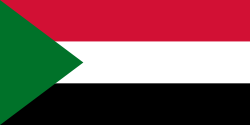 Khartoum: 29 Aug. 1967.
Khartoum: 29 Aug. 1967. Rabat: 21–23 Dec. 1969.
Rabat: 21–23 Dec. 1969. Cairo (first emergency summit): 21–27 Sep. 1970
Cairo (first emergency summit): 21–27 Sep. 1970 Algiers: 26–28 Nov.1973.
Algiers: 26–28 Nov.1973. Rabat: 29 Oct. 1974.
Rabat: 29 Oct. 1974.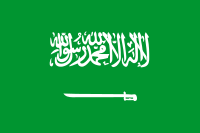 Riyadh (2nd emergency summit): 17–28 Oct. 1976.
Riyadh (2nd emergency summit): 17–28 Oct. 1976. Cairo: 25–26 Oct. 1976.
Cairo: 25–26 Oct. 1976.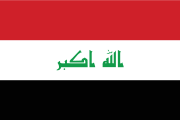 Baghdad: 2–5 Nov.1978.
Baghdad: 2–5 Nov.1978. Tunis: 20–22 Nov. 1979.
Tunis: 20–22 Nov. 1979. Amman: 21–22 Nov. 1980.
Amman: 21–22 Nov. 1980. Fes: 6–9 Sep. 1982.
Fes: 6–9 Sep. 1982. Casablanca (3rd emergency summit): 7–9 Sep. 1985
Casablanca (3rd emergency summit): 7–9 Sep. 1985 Amman (4th emergency summit): 8–12 Nov. 1987.
Amman (4th emergency summit): 8–12 Nov. 1987. Algiers (5th emergency summit): 7–9 Jun. 1988.
Algiers (5th emergency summit): 7–9 Jun. 1988. Casablanca (6th emergency summit): 23–26 Jun. 1989.
Casablanca (6th emergency summit): 23–26 Jun. 1989. Baghdad (7th emergency summit): 28–30 Mar. 1990.
Baghdad (7th emergency summit): 28–30 Mar. 1990. Cairo (8th emergency summit): 9–10 Aug. 1990
Cairo (8th emergency summit): 9–10 Aug. 1990 Cairo (9th emergency summit): 22–23 Jun. 1996.
Cairo (9th emergency summit): 22–23 Jun. 1996. Cairo (10th emergency summit): 21–22 Oct. 2000.
Cairo (10th emergency summit): 21–22 Oct. 2000. Amman: 27–28 Mar. 2001.
Amman: 27–28 Mar. 2001.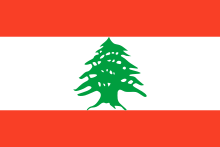 Beirut: 27–28 Mar. 2002.
Beirut: 27–28 Mar. 2002. Sharm el-Sheikh: 1 Mar. 2003.
Sharm el-Sheikh: 1 Mar. 2003. Tunis: 22–23 May. 2004.
Tunis: 22–23 May. 2004. Algiers: 22–23 Mar. 2005.
Algiers: 22–23 Mar. 2005. Khartoum: 28–30 Mar. 2006.
Khartoum: 28–30 Mar. 2006. Riyadh: 27–28 Mar. 2007.
Riyadh: 27–28 Mar. 2007.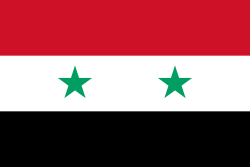 Damascus: 29–30 Mar. 2008.
Damascus: 29–30 Mar. 2008.
- Two summits are not added to the system of Arab League summits:
- Anshas, Egypt: 28–May 29, 1946
- Beirut, Lebanon: November 13 – November 15, 1956
- Summit 14 in Fes, Morocco, occurred in two stages:
- On November 25, 1981: The 5-hours meeting ended without an agreed on document.
- On 6–September 9, 1982
Comparison
| Regional bloc1 | Area | Population | GDP ($US) | Member states1 |
||||
|---|---|---|---|---|---|---|---|---|
| km² | sq mi | in millions (PPP) | in millions (nominal) | per capita (PPP) | per capita (nominal) | |||
| AU | 29,797,500 | 11,504,879 | 897,548,804 | 1,515,000 | 1,131,850 | 1,896 | 1,261 | 53 |
| ASEAN (2007 est.) | 4,497,493 | 1,736,000 | 566,500,000 | 3,115,480 | 1,173,000 | 5,541 | 2,041 | 10 |
| CACM | 422,614 | 163,172 | 37,816,598 | 159,536 | 84,792 | 4,219 | 2,242 | 5 |
| CARICOM | 462,344 | 178,512 | 14,565,083 | 64,219 | 24,020 | 4,409 | 1,649 | (14+1)3 |
| CCASG / GCC | 2,285,844 | 882,569 | 35,869,438 | 536,223 | 717,800 | 14,949 | 20,011 | 6 |
| CEFTA | 298,148 | 115,116 | 28,929,682 | 222,041 | 122,001 | 7,675 | 4,217 | (7+1)3 |
| EU (2007 est.) | 4,324,782 | 1,669,808 | 497,000,000 | 14,953,000 | 16,574,000 | 28,213 | 33,482 | 27 |
| EurAsEC | 20,789,100 | 8,026,720 | 208,067,618 | 1,689,137 | 1,125,528 | 8,118 | 5,409 | 6 |
| EFTA (2007 est.) | 529,600 | 204,480 | 12,660,623 | 567,500 | 743,300 | 44,828 | 60,000 | 4 |
| GAFTA | 9,421,946 | 3,637,834 | 280,727,416 | 1,341,298 | N/A | 4,778 | N/A | (16+1)3 |
| GUAM | 810,506 | 312,938 | 63,764,600 | 456,173 | 106,469 | 7,154 | 1,670 | 4 |
| NAFTA (2007 est.) | 21,783,850 | 8,410,792 | 445,000,000 | 15,857,000 | 15,723,000 | 35,491 | 35,564 | 3 |
| PARTA | 528,151 | 203,920 | 34,137,339 | 858,970 | N/A | 2,954 | N/A | (12+2)3 |
| SAARC | 5,136,740 | 1,983,306 | 1,467,255,669 | 4,074,031 | N/A | 2,777 | N/A | 8 |
| Unasur / Unasul | 17,339,153 | 6,694,684 | 370,158,470 | 2,868,430 | N/A | 7,749 | N/A | 12 |
| UN and countries for reference2 |
Area | Population | GDP ($US) | Units4 | ||||
| km² | sq mi | in millions (PPP) | in millions (nominal) | per capita (PPP) | per capita (nominal) | |||
| UN | 133,178,011 | 51,420,318 | 6,411,682,270 | 55,167,630 | 48,245,198 | 8,604 | 7,524 | 192 |
| Brazil (2007 est.) | 8,514,877 | 3,287,612 | 183,888,841 | 1,804,000 | 1,067,706 | 10,073 | 6,842 | 27 |
| Canada (2007 est.) | 9,984,670 | 3,855,103 | 33,000,000 | 1,274,000 | 1,406,000 | 38,200 | 42,738 | 13 |
| India (2007 est.) | 3,287,590 | 1,269,346 | 1,120,000,000 | 4,726,000 | 1,089,000 | 4,182 | 1,004 | 35 |
| Japan (2007 est.) | 377,873 | 145,898 | 127,433,494 | 4,346,000 | 4,346,000 | 33,800 | 38,341 | 47 |
| PR China5 (2007 est.) | 9,596,960 | 3,705,407 | 1,321,851,888 | 7,043,000 | 3,420,000 | 5,300 | 2,800 | 33 |
| Russia (2007 est.) | 17,075,200 | 6,592,772 | 142,500,000 | 2,076,000 | 1,286,000 | 14,600 | 9,056 | 83 |
| USA (2007 est.) | 9,826,630 | 3,794,083 | 302,000,000 | 13,543,000 | 13,794,700 | 43,500 | 45,594 | 50 |
|
smallest value among the blocs compared largest value among the blocs compared
Footnotes |
||||||||
See also
- Arab Air Carriers Organization
- Arab Fund for Economic and Social Development (AFESD)
- Arabic industrial development and mining organization
- Arab Inter-parliamentary Union
- Arab League and the Arab–Israeli conflict
- Arab Maghreb Union (UMA)
- Arab Monetary Fund
- Arab Organization for Industrialization
- Arab World
- Federation of Arab Trade Unions and Labor Societies
- General Arab Insurance Federation
- General Union of Chambers of Commerce, Industry and Agriculture for Arab Countries
- Greater Arab Free Trade Area (GAFTA)
- Gulf Cooperation Council (GCC)
- International Confederation of Arab Trade Unions
- List of largest cities of the Arab League
- Organization of Arab Petroleum Exporting Countries (OAPEC)
- Organization of the Petroleum Exporting Countries (OPEC)
- Pan Arab Games
- Parliament of the Arab League
- Arab Academy for Science and Technology and Maritime Transport (AASTMT)
References
- ↑ 1.0 1.1 1.2 "Pact of the League of Arab States, March 22, 1945". The Avalon Project. Yale Law School (1998). Retrieved on 2008-07-09.
- ↑ 2.0 2.1 2.2 2.3 2.4 2.5 2.6 League of Arab States, Official Website, accessed June 12, 2007.
- ↑ "Eritrea Joins Arab League As Observer". The Somaliland Times (2003-01-17). Retrieved on 2007-06-13.
- ↑ "Arab League accepts Venezuela as observer". People's Daily Online (2006-07-18). Retrieved on 2007-10-17.
- ↑ "Venezuela Receives Arab League Support for UN Security Council Seat". venezuelanalysis.com (2006-07-19). Retrieved on 2007-10-17.
- ↑ "India invited as observer for Arab League summit". Press Trust of India (2007-03-27). Retrieved on 2007-06-13.
- ↑ "Internal Regulations of the Council of the League of Arab States". Model League of Arab States. Ed Haynes, Winthrop University (1998-04-06). Retrieved on 2008-07-09.
- ↑ "Internal Regulations of the Committees of the League of Arab States". Model League of Arab States. Ed Haynes, Winthrop University (1998-04-06). Retrieved on 2008-07-09.
- ↑ "Internal Regulations of the Secretariat-General of the League". Model League of Arab States. Ed Haynes, Winthrop University (1998-04-06). Retrieved on 2008-07-09.
- ↑ http://www.reuters.com/article/newsOne/idUSN2041155720081120
- ↑ "Report for Selected Countries and Subjects". World Economic Outlook Database. IMF (April 2008). Retrieved on 2008-07-24.
- ↑ "Field Listing - GDP (purchasing power parity)". The world factbook. CIA (2008-07-15). Retrieved on 2008-07-24.
- ↑ Geddes, 1991, p. 208.
- ↑ "The Arab Peace Initiative, 2002". al-bab.com (2005-10-01). Retrieved on 2008-07-09.
Further reading
- Ankerl, Guy: Coexisting Contemporary Civilizations: Arabo-Muslim, Bharati, Chinese, and Western. Geneva, INU Press, 2000. ISBN 2-88155-0044-5
- Geddes, Charles L: A Documentary History of the Arab-Israeli Conflict. Greenwood Press, 1991. ISBN 0-275-93858-1
External links
- Arab League – official site in Arab, English version under construction
- Arab Gateway – The League of Arab states
- World Statesmen – Arab League
- Winthrop University – Arab League General Information
- Jewish Virtual Library – The Arab League
- Looklex Encyclopedia – Arab League
|
||||||||
|
|||||||||||||||||||||||||||||

